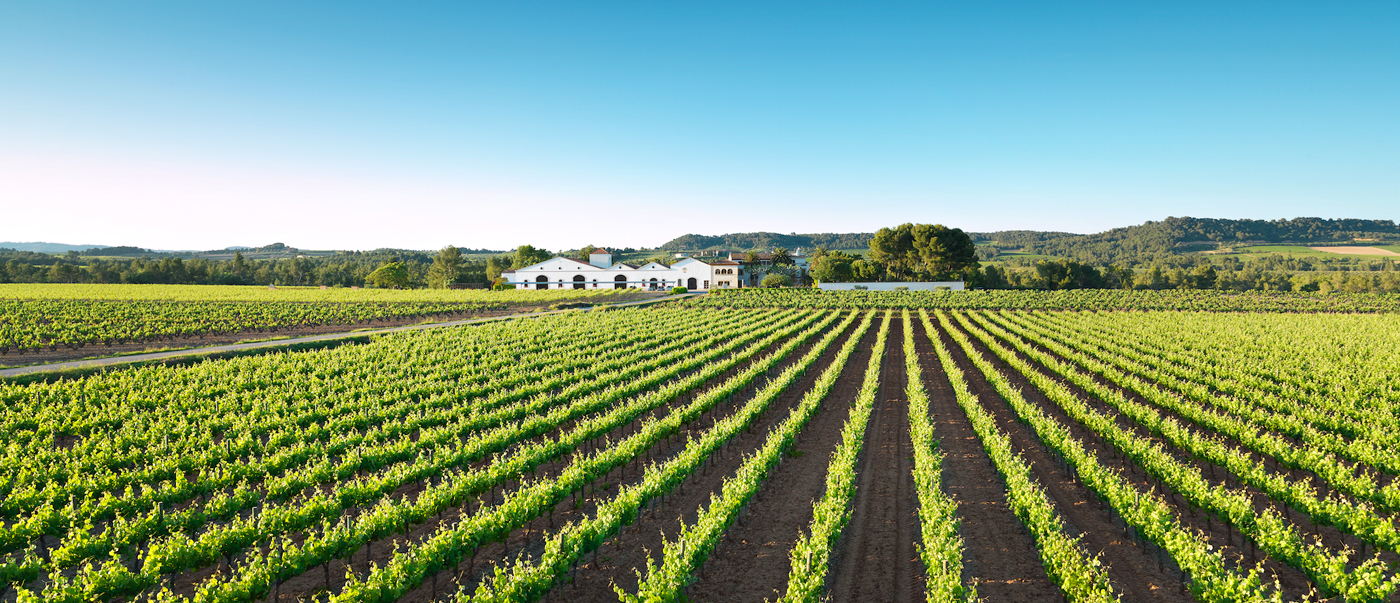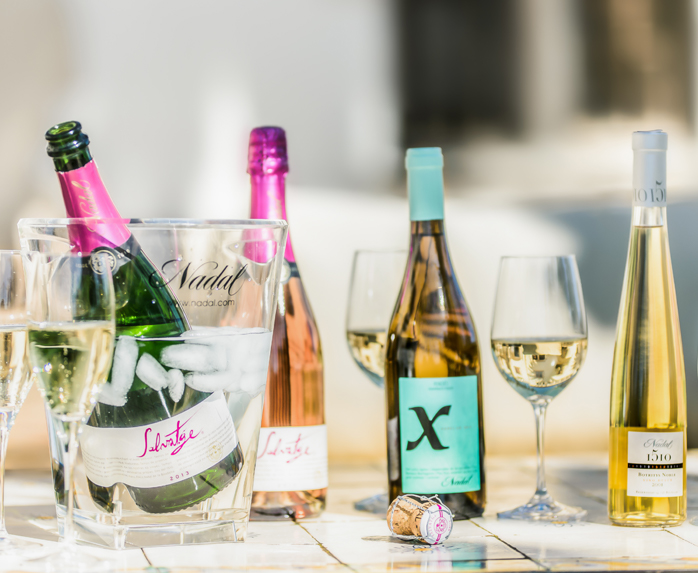
Since 1510
Can Nadal de la Boadella was founded in the early 16th century. The document signed by the notary Francesch Berthomeu in 1510 certifies the ownership of the estate by Pere Nadal, located in the municipality of Torrelavit. According to historical documents, Nadal estate has passed from father to son, faithful to the Catalan tradition of the family heir. The vineyards have been cultivated and wine has been made ever since, without any cease.
Ramon Nadal Giró

He was born in 1903, precisely at the time when vineyards were being replanted in Alt Penedès region, after the phylloxera plague had happened. At that time, the cellar was a distillery where the wine was distilled to produce alcohol. During the Spanish Civil War, a part of the estate was expropriated to construct an airfield. At that time, the entrepreneurial spirit of Ramon Nadal Giró led him to France and to La Mancha, where he produced mistelles using the alcohol of the estate.
With renewed ideas and the profits gained from the commercialization of mistelles, he started a big transformation in the cellar. In 1941, he repossessed the vineyards that the army had used as an airfield during the war, and he built, twenty metres below the ground, the foundational cellar, which still nowadays looks after the most appreciated products of the winery.
The philosophy and vision of Ramon Nadal Giró has guided us over the years to maintain the standards and level of quality of our sparkling wines and white wines. As a tribute to him, the RNG was born, a sparkling wine named after him. In fact, RNG20 is the most iconic corpinnat of our range, a limited edition of 1,049 magnum bottles of 1997 harvest, which will undoubtedly exceed an average of 25 years of aging in bottle once all of them have been commercialised, quite a record in Spain.
Sparkling and white wines
After the transformation driven by Ramon Nadal Giró at the end of the Spanish Civil War, the family business is reoriented from the distillery to the production of sparkling wines. As a result of this evolution, the first bottle of Nadal Brut is born in 1943.
From then on, Nadal winery has been producing great long aged sparkling wines following the artisanal rituals of the traditional or champenoise method. Since 1998, with the third generation of the family in charge of the winery, Nadal started to produce white wines. Firstly dry xarel·lo wines and, afterwards, the first sweet wine from natural Botrytis made in Spain, of macabeu variety.
Organic and sustainable viticulture
Sustainable viticulture and production techniques have been a way of life at Nadal estate since its foundation in 1943. The responsible and respectful use of natural resources gives meaning and substance to our wines.
That’s why the grapes for our sparkling and white wines are organic. We make a clear commitment to manual practices, prioritising preventive work over chemical intervention. We do not use pesticides or artificial fertilizers and work every day to adapt our vineyards to climate change while practising dry viticulture, which best highlights the unique characteristics of each harvest, influenced by the climate.
Champagne, cava… CORPINNAT
Our grandparents witnessed its birth, calling it champagne; our parents called it cava, and the new generations already know it as corpinnat. Faithful to Ramon Nadal Giró philosophy, working with native varieties and long-aged sparkling wines, Nadal was one of the founding wineries of CORPINNAT in 2018.
It is a quality label for our sparkling wines that certifies their origin and it is also one of the most demanding production processes in the world, both in the vineyard and in the cellar. Some of the principles of this collective brand include organic cultivation of vineyards, manual harvesting, on-site vinification, minimum aging of 18 months, and a commitment to historical varieties.
Commitment to native varieties
At Nadal de la Boadella estate, the cultivation is primarily focused on Penedès’ historic white grape varieties: macabeu, xarel·lo, parellada, xarel·lo vermell, and malvasia de Sitges. The vines, some of which are over 80 years old, yield balanced and high-quality grape productions. The estate produces more grapes than needed to cover its entire own harvest production, enabling us to selectively choose the best grapes for crafting our corpinnats and white wines.
Macabeu is a highly-regarded grape for its ability to produce complex and structured corpinnats, contributing fresh and fruity aromas. The bunches, tightly packed, consist of medium-sized golden-coloured grapes. The juice is moderately sweet, and the acidity is average. Harvesting takes place at the end of August.
In exceptional macabeu harvests, we use the grapes from our vineyards which are over 60 years for our Salvatge range of corpinnats. Macabeu is also the protagonist of Nadal 1510, a sweet white wine created with grapes naturally affected by the noble rot fungus Botrytis. In 1998, it became the first of its kind in Spain.
Xarel·lo is the flagship variety of Penedès region. It produces pale corpinnats with ochre tones that are voluminous in the mouth and have ripe fruit aromas. The bunches are not tightly packed, consisting of medium to large-sized amber-colored grapes. It contains a high concentration of resveratrol, a phenolic compound that helps prevent cardiovascular diseases. Harvesting typically occurs between late August and early September.
From the best harvests of this variety, we create the very long-aged RNG corpinnats. Out of the 1997 harvest, the iconic RNG20 magnum corpinnat was born as our most emblematic sparkling wine.
When harvested in the first half of September, the grapes are ideal for crafting a fresh, flavorful, and persistent white wine with herbaceous aromas, and hints of floral and white fruit notes. From these grapes, Nadal X wine is born.
Parellada yields corpinnats with greenish reflections and floral aromas, contributing smoothness on the palate. The grapes, fairly compact, consist of large, greenish berries with golden and slightly pinkish reflections. Despite being the variety that contributes the least in terms of sweetness and acidity, it is indispensable for its delicate aroma and finesse on the palate. Parellada reaches maturity in the first half of September.
This grape variety is the one that gives a distinctive style to the Nadal corpinnat range, which was born 80 years ago.
Xarel·lo Vermell is a grape variety of extraordinary beauty, distinguished by the pale reddish tone of its skin. Despite its color, it possesses all the characteristics that classify it as a white variety. This rare grape is planted on less than 100 hectares worldwide, all of which are located in Penedès region, and seven of them at Nadal de la Boadella estate.
It has thicker skin than xarel·lo and a higher acidity, allowing for a delayed harvest in the first half of September. From this variety, Nadal X Vermell is born, a dry white wine with red reflections, slightly spicy aromas, hints of menthol, and a noticeable creaminess and freshness on the palate.
Malvasia de Sitges is a historical variety from Catalonia that was about to become extinct in the late 20th century when only two hectares remained. In 2017, there were 66 hectares, mostly located in Garraf region, and the rest in Penedès.
Its bunches have a very long structure, and the grapes, golden if left to overripen for sweet wine, are oval-shaped and very loose. It yields highly aromatic wines, with notes of jasmine, orange blossom, and rose. In the mouth, they are very fresh and pleasant with a saline ending. With this variety, we produce excellent sweet wines and the corpinnats Plot Twist Brut – white and rosé – which already bear the imprint of the fourth generation Mireia Nadal.

 No products in the cart.
No products in the cart.